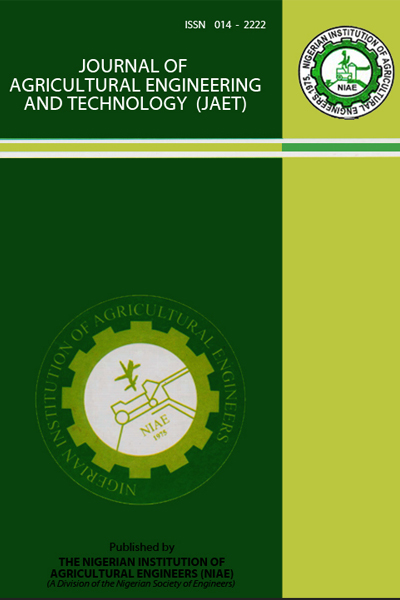DESIGN AND DEVELOPMENT OF A HYBRID SOLAR-ELECTRIC DRYER FOR SLICED VEGETABLE CROPS
Keywords:
drying, vegetables, hybrid dryer, solar heat, electric heatAbstract
A hybrid cabinet dryer was designed and developed to reduce vegetable waste and improve their storage conditions. The dryer consists of three main units: drying chamber, heating unit and control unit. Design calculations were made based on some basic engineering assumptions, considerations and principles of heat and mass transfer. The dryer has a batch capacity of 25kg of
fresh sliced vegetables per day. A no-load test was conducted to evaluate the thermal profile of the dryer, which involved running the dryer at five different air velocities (0.1, 0.5, 1.0, 1.5, and 2.0m/s) in order to determine the required time to reach the preset optimum drying temperatures (50, 55, 60, 65, 70oC) for the selected sliced vegetable crops (okra, tomato, and pepper). Results obtained indicate that an average minimum dryer heat-up time of 5.2 minutes was required by the hybrid dryer at a temperature and air velocity of 70oC and 2m/s respectively. Drying temperature and air velocity were observed to have significant influence on the dryer heat-up time and dryer tray temperatures. The performance of the dryer was attributed to the heat contribution of the solar collector which is affected by the hourly solar radiation and ambient air relative humidity as well as the heat contribution of the electric heater, making the dryer a hybrid. The hybrid energy regression equation model was developed in terms of drying time. These results were obtained for no-load condition of the designed dryer. Good prospects for future applications as well as recommendations were stated.


